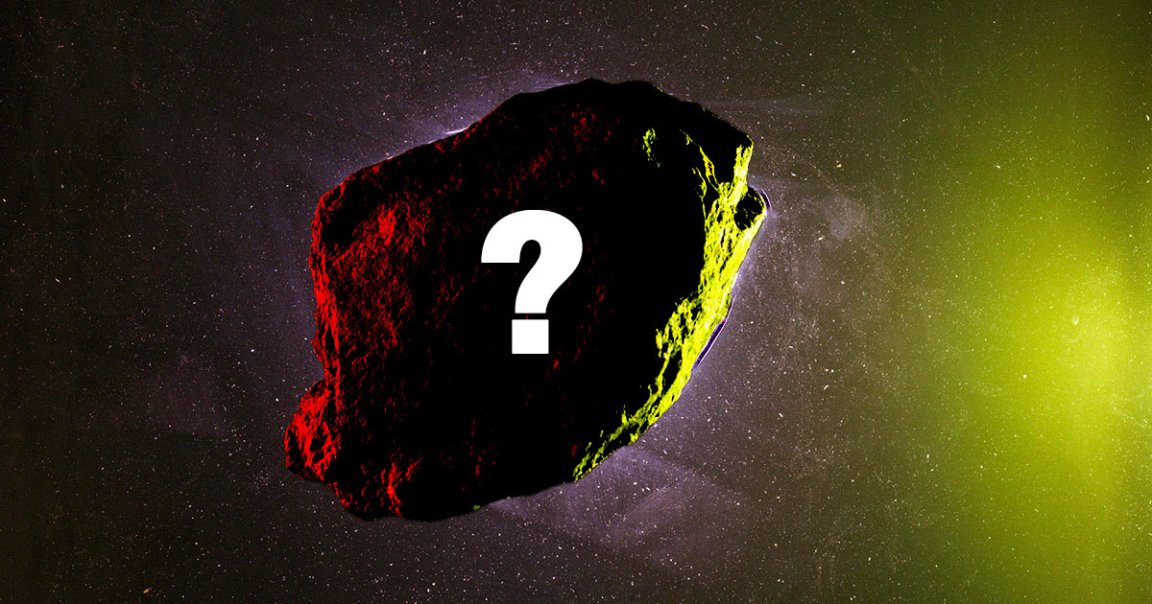
Earlier this month, astronomers were thrilled to spot an interstellar object — only the third of its kind ever observed — hurtling toward the center of the solar system on an extremely unusual trajectory and at a breakneck velocity.
While we’re only beginning to understand the unusual object, dubbed 3I/ATLAS, the discovery led to widespread speculation, with some scientists suggesting that it may be almost as old as the Milky Way galaxy itself, and billions of years older than our own Sun.
Unsurprisingly, Harvard astronomer Avi Loeb — who has extensively written about ‘Oumuamua, the second interstellar object ever discovered, notably hypothesizing that it might have been a relic from an extraterrestrial civilization — has now waded into the discussion.
In a blog post on Medium, he argued that it will take more observations to conclude the nature of 3I/ATLAS, which is likely either a comet or asteroid. However, Loeb didn’t rule out the “tantalizing possibility” that it was “sent towards the inner solar system by design” — a conclusion that’s already proved controversial.
Loeb chided the editors of Wikipedia and the scientific journal RNAAS for striking the hypothesis from his contributions, showing once again that his theories about extraterrestrial probes visiting our solar system remain as contentious as ever.
The astronomer has remained steadfast in his belief that ‘Oumuamua, an interstellar object first observed in 2017, may have been sent to us by an alien civilization, garnering him enormous attention in the media. He has even gone on to hunt for pieces of what he claims may be an alien spacecraft, based on detections of a three-foot, interstellar meteor crash-landing near Papua New Guinea in early 2014, by combing the ocean floor with a modified ship.
In other words, his latest comments about 3I/ATLAS are very much in line with what we’d expect from him.
In his blog post, Loeb announced that he had authored a new paper about 3I/ATLAS’ unusual size. Based on its “anomalously bright” nature, the astronomer concluded that the object was roughly 12.4 miles in diameter.
That would make it considerably larger than ‘Oumuamua, which only measured anywhere from 330 to 1,300 feet long.
However, those calculations raise more questions than answers.
The interstellar object’s ‘ “size estimate makes little sense for an interstellar asteroid because the interstellar object 1I/’Oumuamua was 200 times smaller, and based on the statistics of asteroids in the Solar system, we should have discovered a million objects of the scale of 1I/’Oumuamua before spotting one interstellar object that is [roughly 12.4 miles] in diameter,” Loeb wrote.
“We know that [12.4-mile] asteroids are rare, because non-avian dinosaurs were killed by an asteroid half that size 66 million ago, whereas meter-scale asteroids impact the Earth every year,” he added.
However, subsequent observations forced Loeb back to the drawing board. Given the lack of “spectral fingerprints of atomic or molecular gas,” 3I/ATLAS likely isn’t a comet, as Loeb had initially suggested.
“If 3I/ATLAS is not an asteroid — based on the interstellar reservoir argument in my paper, nor a comet — based on the lack of the spectral fingerprints of carbon-based molecules around it, then what is it?” Loeb asked rhetorically, highlighting his “by design” theory.
Fortunately, there’s still time for the scientific community to get a closer look.
“The size anomaly of 3I/ATLAS will be easily clarified by upcoming data,” Loeb wrote. As it “gets closer to the Sun, it will get brighter. If it is a solid object without a cometary plume of gas or dust around it, then its brightness will increase inversely with the square of the decreasing distance from the Sun times the square of the distance from Earth.”
“The simplest hypothesis is that 3I/ATLAS is a comet and we are missing the spectral features of its gaseous coma because of its large distance from Earth,” he added.
But without any observed cometary tail, Loeb suggests there’s a chance we could be looking at evidence of an extraterrestrial visitor.
“Let us instead maintain our childhood curiosity and seek evidence rather than pretend to be the adults in the room that know the answers in advance,” he concluded.”Science does not need to feel like a lecture in a classroom, summarizing past knowledge. It could be far more exciting if the teachers would be willing to learn something new!”
More on 3I/ATLAS: The Interstellar Visitor Hurtling Toward the Center of Our Star System Is Unimaginably Ancient, Scientists Say